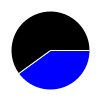Why You Need Two-Headed Giant in Your Life: Part 2
Deck Challenges Opinion
zandl
30 May 2016
1584 views
30 May 2016
1584 views
Why You Need Two-Headed Giant in Your Life
Part 2: Practice & Challenge
Welcome back, bicranial enthusiasts! In this second Two-Headed Giant article, we’re going to see what it takes to construct a pair of balanced, synergistic decks to prep you for your upcoming successful career as a local 2HG hotshot. If you’re just now joining us, be sure to check out the first article and catch up: Why You Need Two-Headed Giant in Your Life: Part 1.
The Archetypes - Pick their poison.
Just as in any other format, choosing your archetypes and strategies is the first step in constructing a focused and powerful pair of decks.
Aggro
Aggro is typically a tough nut to crack in 2HG even when both decks are aggressive. This is largely because any given defending team has twice the number of resources to fight off an early assault with. While you’d logically argue that the aggression is twice as fierce, my counterargument is that one Radiant Flames is going to kill every player’s creatures. Imagine you and a teammate both using creature-based aggro and having to fight through a Radiant Flames and a Languish. It’s not impossible to double-deck aggro, but it’s tricky and requires a bit more luck, I’d say, than a 1v1 aggro deck does.
Strategies here usually include effects like Volcanic Rush to strengthen a team’s overall aggression or may put focus on one deck’s efficient creatures with the other’s pump spells, burn, and/or removal. Speed is important, but being able to recover from a board wipe is paramount.
Midrange
Because 2HG games tend to play out at a slower pace, midrange decks that can go bigger on the curve are generally favored over decks that peter out by the mid-game turns. Efficient, large creatures (i.e. Thunderbreak Regent, Kalitas, Traitor of Ghet) are essential in securing pressure in those mid-game turns while a diverse removal package ensures stabilization throughout the game. Slower midrange decks also have the benefit of being able to attack from many different angles, putting a strain on opponents’ resources and limiting their choices as the game goes on.
Control
As with midrange decks, control’s built-in advantage in 2HG is that games take longer to progress and decks typically need more time to establish pressure. Control decks work best as support for midrange or in conjunction with other control decks, sharing resources with teammates and stringing together deep lines of play to incapacitate opposing teams. Countermagic is essential in preventing those haymakers (i.e. Fall of the Titans for X = 11) from ever getting off the ground as well as preserving your well-laid plans. Removal that can deal with many different card types is key while your win-conditions must be resilient, hard-hitting, and able to adapt to an ever-evolving battlefield.
Combo
Stuck somewhere between aggro and control, combo decks in 2HG can be difficult to build and use correctly. Comboing off in a 1v1 game is hard enough as it is, trying to use your spells to win instantly while simultaneously keeping yourself in the game long enough to do it. Against a pair of opponents, you face twice the number of potentially disrupting spells and twice the pressure to combo off by a certain turn.
Combo decks must be extremely resilient ("glass cannon" decks can gtfo) and are best when supported by a deck that can devote its own resources to you. In light of this, you almost always want to pair combo with control. Deck-building difficulties arise, though, from the need to be "all in" on the combo since a less-supported, "backup combo" win-con is far more likely to be disrupted in 2HG. This laser-focusing of a strategy can leave decks highly susceptible to a broader array of threats and is tough to rationalize using.
The Decks - Arm yourself.
Below are two different pairs of Standard 2HG decks with insight regarding card decisions and strategy options:
2HG Sample 1: Abzan Landfall
Standard
124 VIEWS | IN 1 FOLDER
Creatures: 6
4 Herald of the Pantheon
2 The Gitrog Monster
Planeswalkers: 3
3 Sorin, Grim Nemesis
Enchantments: 12
4 Retreat to Emeria
4 Retreat to Hagra
3 Retreat to Kazandu
1 Quarantine Field
Sorceries: 8
3 Languish
3 Painful Truths
2 Ruinous Path
Instants: 4
4 Anguished Unmaking
Lands: 27
4 Evolving Wilds
4 Llanowar Wastes
4 Shambling Vent
3 Caves of Koilos
2 Blighted Woodland
5 Forest
3 Swamp
2 Plains
2HG Sample 1: Izzet Control
Standard
111 VIEWS | IN 1 FOLDER
Creatures: 8
4 Jace, Vryn's Prodigy Flip
4 Thing in the Ice Flip
Planeswalkers: 3
3 Chandra, Flamecaller
Artifacts: 2
2 Pyromancer's Goggles
Sorceries: 4
4 Tormenting Voice
Instants: 17
4 Fall of the Titans
4 Fiery Temper
4 Spell Shrivel
3 Comparative Analysis
2 Fiery Impulse
Lands: 26
4 Drownyard Temple
4 Highland Lake
4 Shivan Reef
4 Wandering Fumarole
6 Mountain
4 Island
Let’s use our handy-dandy 2HG deck checklist from the previous article to see if this pair covers our bases:
- The decks play well together and include a number of cross-deck synergies.
- Check. Both decks capitalize on the slower pace of an average game of 2HG and take a heavily reactive approach by sitting behind a myriad of Retreats with removal spells at the ready. The Retreats allow the Abzan deck to actually provide pressure without new spells each turn, letting both decks save up spells for when they’re truly needed. Yeah; Languish nukes Thing in the Ice Flip, but Languish is a necessary card that can rescue a team by taking out a multitude of spells all at once.
- The decks don’t share colors, or minimize the colors they do share.
- Check. While sharing a color between two decks is not inherently bad, digging too deep into one color will leave your deck weaker to the strategies that tend to harm that color. Having a wider selection of colors to choose from will also keep you from running out of relevant spells within those colors, letting you choose from the very best without sacrificing card power. Generally, 2HG decks that share a color do so for the sake of different multicolored cards in that color.
- The decks can "shift" power between the two.
- Check. Should the Retreats fail to appear or be destroyed by the odd enchantment removal spell, the Izzet deck can take over with Awoken Horror
Flip, Chandra, Flamecaller, and Fall of the Titans. Similarly, if the Izzet deck
Izzn’tisn’t getting the job done, the Abzan deck can go bigger with Sorin, The Frog, Quarantine Field, and Anguished Unmaking.
Now let’s see what a more aggressive deck pairing might look like.
2HG Sample 2: Naya Tokens
Standard
80 VIEWS | IN 1 FOLDER
Creatures: 7
4 Hangarback Walker
3 Archangel Avacyn Flip
Planeswalkers: 8
4 Gideon, Ally of Zendikar
4 Nissa, Voice of Zendikar
Enchantments: 8
4 Impact Tremors
4 Oath of Nissa
Sorceries: 4
4 Dragon Fodder
Instants: 8
4 Atarka's Command
4 Secure the Wastes
Lands: 25
4 Canopy Vista
4 Cinder Glade
3 Fortified Village
3 Game Trail
2 Westvale Abbey Flip
4 Plains
3 Mountain
2 Forest
2HG Sample 2: Rakdos Burn
Standard
107 VIEWS | IN 1 FOLDER
Creatures: 7
4 Thunderbreak Regent
3 Tyrant of Valakut
Sorceries: 12
4 Exquisite Firecraft
3 Read the Bones
3 Ruinous Path
2 Descent of the Dragons
Instants: 16
4 Draconic Roar
4 Fall of the Titans
4 Kolaghan's Command
4 Ultimate Price
Lands: 25
4 Foreboding Ruins
4 Smoldering Marsh
2 Blighted Fen
2 Cinder Barrens
2 Haven of the Spirit Dragon
7 Mountain
4 Swamp
- The decks play well together and include a number of cross-deck synergies.
- Check. The token deck is far and away the main aggressor of the two, relying on the Rakdos deck for support. Descent of the Dragons may seem (and be) cute, but giving the token deck a volley of dragons to swing with can be a deadly combination if Impact Tremors doesn’t just do the trick right away. Beyond this, the Rakdos deck is fully capable of smashing open large Hangarback Walkers at instant-speed, saving it from Stasis Snare, Anguished Unmaking, and the like. Finally, the two decks attack from a variety of angles: direct damage, going wide with creatures, planeswalkers, instant-speed game-changers, and airborne threats. You’d be hard-pressed to stop them all before turn-6.
- The decks don’t share colors, or minimize the colors they do share.
- Check. I wanted to give you an example of decks that actually share a color and show you why it isn’t always a bad idea. The token deck uses Red’s ability to go wide with Impact Tremors and Atarka's Command while the Rakdos deck utilizes burn spells and larger, mid-game threats. As long as the decks complement each other and the card choices are sound, any overlapping colors shouldn’t be too detrimental.
- The decks can "shift" power between the two.
- Check. As previously mentioned, the token deck is the one carrying the real brunt of the power between the two. However, the dragons and constant damage in the other deck are more than capable of taking over a game, especially if the opposing team focused on just the token deck for some time. The Rakdos deck is also capable of playing a longer game, utilizing cards like Blighted Fen and Read the Bones to stay relevant in the late-game.
The Challenge - Earn those Feature Tokens.
As promised, here’s your chance to earn a reward for your loyalty in reading this article and its predecessor.
Your task is to create a pair of Standard Two-Headed Giant decks that fit into the 3 major criteria listed just below. You should leave links to both decks in a comment on this article page, copy and paste the criteria beneath your links, and then leave brief descriptions of how you feel your decks meet each one.
Do your decks share any colors? If so, why? If not, why not?
Can your decks be self-sufficient if one becomes incapacitated?
Next Monday at 8pm MDT, I’ll choose my three favorite deck pairs based on your lists and descriptions. The creators will each have 2 Feature Tokens added to their accounts so they can show ’em off or promote any other decks they’re proud of.
 zandl
zandlRussischerZar says... #2
What I have learned is: if you have the format/cardpool to support two burn decks (remember team unified deck construction rules), this is a really good strategy, as you effectively only have to deal 15 damage to each player.
However, due to the unified construction rules, this is very hard to pull off in Standard and will likely work better in a Modern/Legacy-ish environment.
May 31, 2016 4:55 a.m.
RoarMaster says... #3
Yeah, I was super excited for a 2HG deck building challenge, but then I realized it was Standard only :'(
Maybe next time you will do a modern or legacy one? Hint hint... ;)
May 31, 2016 4:17 p.m.
Okay, time for my entries:
My deck:
I lost my sanity. Please don't help me find it.
Standard
14 VIEWS
and
My deck:
Naya Resurrection
Standard
7 VIEWS
Admittedly, they aren't so much synergistic as designed to not get in each other's way, but Dread and Liliana allow the reanimator deck to set up (or get some cheap removal) while pulling cards out of the opponents' hands.
They don't share any colors in part so they can run what they wish, but also because the u/b color scheme naturally fills the control role and r/w/g scheme naturally fills the aggressive role.
Both are designed to be fully functional decks in their own right, so they will be able to handle themselves if the partner falters, and are actually designed to provide some sort of backup while they are faltering.
June 2, 2016 3:18 a.m.
Here are my entries:
The decks play well together because they don't get in each other's way, there are purposefully very little field wipes in either deck and a lot of targeted removal. Both are capable of defending the others field both on creature and spell fronts.
They don't share colors so they have access to many different forms of controlling/buffing spells.
Each deck is capable of functioning on its own but I believe the Defense half has a better shot on it's own due to counters and bounce spells.
June 2, 2016 9:56 p.m.
Here are my entries:
2HG - Defense
Standard
1 VIEW
2HG - Assault
Standard
1 VIEW
The decks play well together because they don't get in each other's way, there are purposefully very little field wipes in either deck and a lot of targeted removal. Both are capable of defending the others field both on creature and spell fronts.
They don't share colors so they have access to many different forms of controlling/buffing spells.
Each deck is capable of functioning on its own but I believe the Defense half has a better shot on it's own due to counters and bounce spells.
June 2, 2016 10 p.m.
ShikaSpectre says... #7
June 3, 2016 2:46 a.m.
TacticalAce0117 says... #9
This is my first attempt at a deck-building challenge, so here goes!
2HG: Izzet Control Standard
Standard
0 VIEWS
2HG: Abzan Company Standard
Standard
0 VIEWS
The Abzan Company Deck attempts to go infinite with Brood Monitor + Eldrazi Displacer + Zulaport Cutthroat , while the Izzet Deck tries to hold off the opponent. There is some cross-deck synergy with Eldrazi Displacer + Thing in the Ice , significantly reducing the clock on Thing in the Ice Flip.
These decks do not share colors in order to maximize efficiency.
The two decks can shift power between each other. Though the Abzan deck will do most of the hitting, as it often goes wide with its creatures, the Izzet deck can pack a punch late game as well with Rise from the Tides and Thing in the Ice Flip.
June 5, 2016 2 a.m.
Flickering Thing in the Ice Flip resets the counters rather than removing them as it's an ETB effect.
June 5, 2016 3:08 a.m.
TacticalAce0117 says... #11
To edit my previous submission, I just realized that Eldrazi Displacer does not remove the counters from Thing in the Ice Flip, instead it refreshes them. There is still synergy here, as the displacer can delay Thing in the Ice Flip from flipping at an inconvenient time.
June 5, 2016 11:59 a.m.
Demacias_Nerd says... #12
Here are my entries:
and
The decks play well together and synergize by covering eachother's butts. Deadly Sins is a burn, so is weak to countering, but the control in Grace takes care of that. Saving Grace is more control, so is weak to creatures, but the creature removal in Sins covers that. The decks share no colors so they don't trip over eachother (Deadly Sins is R/B, Saving Grace is G/U/W). If Grace gets screwed then Sins can burn out the opponents, and if Sins gets screwed Grace can stop the opponents from doing anything until Sins gets back on its feet.
June 5, 2016 11:40 p.m.
Great job on the submissions, everyone! Winners receiving 2 Feature Tokens apiece are:
DaftVader
TacticalAce0117
Zaueski
Keep an eye out for further challenges from me in the future.










DaftVader says... #1
Well, I've finally decided on the pair to enter:
2HG challenge - Drain
Standard DaftVader
1 VIEW
and
2HG challenge - Ramp
Standard DaftVader
1 VIEW
I threw together a load of other lists, from Impact Tremors to tempo to surge to control, but these lists feel like they should work together the most smoothly.
They're a little slow, but so is 2HG on the whole, so hopefully aggressive decks wouldn't be a problem.
I've opted for more creatures and less removal on the whole, but both decks are still capable of killing/countering threats, and I am in different colours mainly due to the archetypes not having overlapping colours, but also so I wouldn't have to be careful about duplicates.
Most of what you're after should be in the descriptions.
May 31, 2016 4:44 a.m.